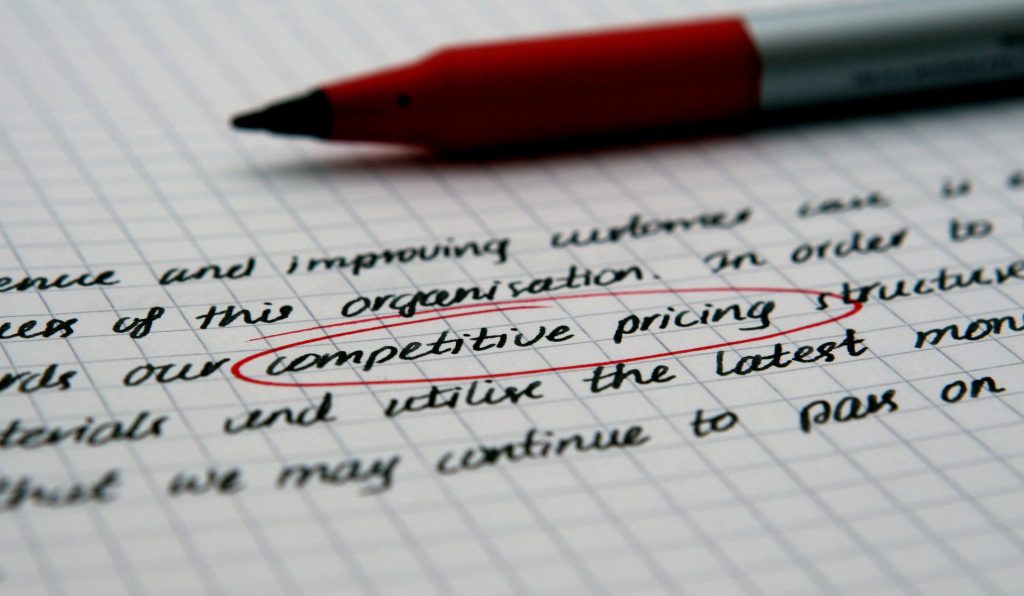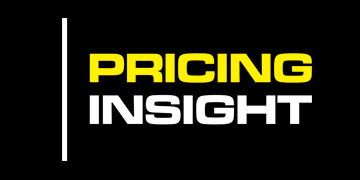Margin Expansion Planning: A Framework to Improve Profitability
Executives are under increasing pressure to find margin to drive earnings. It is hard to sell more because the market share game is often a zero-sum game—or, in many cases, a less than zero sum game.
There are many management levers we need to control every day. Then there are the blinking lights of email queries, corridor conversations, and structured meetings that must be dealt with. We run out of time, or need to focus attention elsewhere to get through the demands of the day. The result is that pricing decisions are often made in isolation using less than ideal techniques such as cost-plus mark-up pricing or following random pricing intelligence reports of what competitors are allegedly doing.
Pricing is your most powerful lever to manage margins. To make it easier to see margin opportunities and various cause and effect dependencies, Pricing Insight has created the MxP – Margin Expansion Planning framework. The MxP framework is something we use to focus on margin problems and see patterns, relationships, trends, and outliers that provide clues about the probable success of one course of action over another (we say “probable success” because pricing is a game of probabilities and bell curve distributions).
Allocating the time and mental bandwidth to think through your pricing and margin opportunities, along with engaging the help of colleagues across functions, will generate a substantial payoff.
The Margin Expansion Planning framework is used to evaluate your revenue model and identify the dependencies and interactions associated with your business’s pricing structure. The framework allows you to evaluate your company’s revenues against overall strategy and business model. The framework is by no means exhaustive, but does cover many of the pricing scenarios we come across every year.
There are six key elements to the MxP framework: Price, Discounts, Rebates, Costs, Volume, and Mix. We will address some of the variables in this MxP framework by identifying their function–and some caveats and considerations that should be used in managing each one.
Price
The List Price is often considered the recommended retail price (RRP) where there are multiple channel distribution points or a wholesaler / re-seller business model in place. For example, Bunnings use a RRP less 15% for their trade model. For non-tradies who go to Bunnings, you’re doing your bit to help the tradie make some margin when he shows you that the materials were bought “at cost.”
For B2B markets where list prices are most common, many companies simply create these list prices by using a multiplier on cost – an effective mark up on cost, or “cost plus markup” as it is technically known.
The biggest issue we see with list prices is that they are usually built from costs, so they typically underprice goods or overprice them. Cost is rarely a good proxy for the value that can be realised in the market.
Why is this statement so crucial?
In almost all buying situations, the customer’s reason for buying hinge not on your cost position but on their “want state”. What the customer wants is driven almost always by two factors: Motivation – the reason for purchase (ranging from discretionary to mandatory) and Application – how the product / service will be used (ranging from low risk to high risk).
Let’s look at an example: Surgical gloves. The Motivation is not discretionary; a surgeon is required to wear a certain standard of surgical glove. The application is high risk. The gloves cannot break–otherwise infection risk could occur for both patient and surgeon. On the other hand (pun intended), a sandwich glove used at a canteen is not mandatory and the risk of infection probably low–but we all like to see the sandwich maker wearing one.
If these two types of gloves were priced according to cost, it is highly likely that the sandwich maker’s glove would be overpriced and the surgical glove underpriced. In the case of the sandwich glove, we would miss sales–and in the case of the surgical glove, we would miss margin.
Both result in lost profits. We see this scenario play out over thousands of products across the dozen or so companies we work with each year.
The caveat here is to design your list price according to value pricing principles. Make sure you have a well-thought-out price point relativity between your budget, better, premium and ultra-premium products. The last category here is interesting, as we often see exponential price differential opportunities in the ultra-premium category.
What this means is that customers for ultra-premium products often will pay 100 – 300% more for these products over the regular product.
Customer Discounts
Customer discounts refer to the price levels the customer is given. Almost all companies slot their entire customer base into one of five graded levels, often with an enormous five percent additional discount between each level. These are often delineated as Levels 1-5– or my favourite, AAA, AA, A, B & C. The AAA are provided with the highest level of discount and hence the lowest prices.
Can you see what happened here?
The company started out with 3 levels: A, B & C. When market conditions changed, they simply added AA and when conditions changed again they added AAA. Unfortunately, after years of pricing from the hip, their credit rating could not be described as AAA.
What can you do with customer discounts to improve profitability? Once you have your channel strategy worked out between the various pathways to market, you can optimise discounts by customer.
Here is a case example: We worked with a large transport company that had over 11,000 active customers. They were split into various pricing levels based on annual spend. We found that annual spend wasn’t the best way to determine customer price level or discount. Using the principles of Application and Motivation discussed earlier, we could reclassify customers. We looked at industry by SIC, freight type–express or general, dangerous or standard good–freight point-to-point usage and growth, and overall tonnes shipped.
Across these variables and others, we were able to develop a unique customer price level that was consistent with the value the customer was extracting from the fright network. This approach overrode the typical annual spend approach to customer segmentation and customer price level.
The lesson? Force-fitting customer pricing into 5 levels of levels of discounts leaves a lot of money on the table. The value-optimised approach creates a customised price discount level for 11,000 customers. When your company is only making 5 percentage points of EBIT, offering up 100% of your EBIT margin profile as step change in discount levels is risky business indeed. Your customer guidelines will be neat and tidy and your P&L will be uncontaminated by profit.
Tactical Discounts
Tactical Discounts are the daily bread of sales: Every sales rep around the world uses them to close deals. What’s wrong with that? Nothing, except a world of hurt and heartache for these that have to clean up the mess of a rep who offered too deep a discount. That rep created channel disharmony or exposed their company to punitive action by their large customers: Those customers got tired of fighting off smaller competitors who distributed the same products–but used the product as a loss leader to win market share of the larger players.
Does this sound familiar?
In many cases, the discount provides useful psychological theatre to entertain the customer’s need for a bargain. Sellers of Persian rugs know this well: Few Persian rug shops offer anything less than a 60% discount. The List Price has already factored in the “discount”.
However, many companies are not as sophisticated as a Persian rug seller and instead go to market with “realistic” market prices that get promptly discounted because of the required “pricing theatre”. There is usually some authority sign-off matrix that escalates to more senior levels when the discounts exceed nominated thresholds. The strange irony here is that the person who knows the least about the deal and the customer is the one who must give the discretionary approval to offer the extra discount.
I once saw a sales and marketing director who had set up a Lotus Notes email sign-off process that carried out this very escalation. When I looked at his email inbox, it was full. There were over 40 requests for discount sign-off approval. The value of these requests amounted to over $500,000 in pure profit, and this represented just two weeks of discount requests. It was a system, but not one designed to improve profitability. However, everyone was certainly busy “signing off” the discount requests.
What is needed to manage tactical discounts is a set of tactics guidelines issued by the Pricing Management function, in consultation with the various departmental heads. Sales reps should be able to make pricing decisions on the spot if they fall within tactical guidelines. If the company loses business due to tactical pricing levels, this should be tackled and a more informed / strategic decision made that supports total company profitability–and not just the profitability of one region, territory or market segment.
Rebates
One of the most misunderstood pricing mechanics in history is the rebate. Rebates are much maligned and hunted down by managers who have been burned by them: Typically, CFOs don’t like rebates as they see the accrual as a balance sheet liability, and it annoys their accounting minds. Rebates are a bit like pre-nuptial agreements: They seem logical and well-intentioned but can often become a major drag and a cause of much disagreement once customer and supplier fall out of love.
Poor set-up, poorly administration, and poor communication of value to the customer are all reasons not to have rebates. But do rebates actually have any value?
The answer is yes, they do – in fact, they can be crucial to drive customers not just to buy more of your products but to buy them in the right way. What do we mean by this? If you sell multiple product categories to the one customer, their procurement manager will be exposed to low-ball offers from multiple suppliers (your competitors) all looking to get a beachhead into the customer’s buying program.
The Sales Target Rebate
By offering rebates across total revenue spend, the customer will see that saving 20% on one line item or SKU that’s worth $20,000 per year will put at risk a rebate that is worth $200,000 per year. There is $180,000 in more immediate economic value in your offer when compared at invoice level.
The Supply Chain Rebate
The other type of rebate that generates value is the supply chain rebate.
Supply chain rebates are useful to lower the cost of doing business (CODB). Lowering the CODB by driving customers to consolidate orders and order less frequently, order up more of a certain product each time, or order by electronic means (such as online ordering, rather than by phone or fax) all hep drive down costs to create a supply chain dividend.
This “dividend” can be reinvested back into the marketplace to secure behavioural change and loyalty from customers.
Rebates are so valuable that it is worth having a full time rebate and discounts management team–aka the pricing team–to manage this for you.
In Conclusion
Some companies are still wondering if they should have a full-time pricing manager or pricing team. The MxP framework is simple enough to walk through, but a complex animal to manage and master. In the past, many of the areas listed in MxP were handled by the sales team with some input from the accounting team–but all on an ad hoc basis, in addition to their regular jobs. As revenues under management grow and gross margins contract, business profitability is now highly leveraged to price movements.
Today, pricing management is a full-time job–and will be a lifetime career for many. The challenge of creating and managing your own Margin Expansion Plan can be solved with a structure and a plan. Without a plan, pricing will be deemed a black art.
Here is a checklist to start your own Margin Expansion Plan:
- Are list price relativities set up across each sub category, brand and SKU?
- For customer discounts: is price segmentation undertaken using behaviours to identify value vs. pure spend metrics?
- Are tactical discount guidelines issued each day / week / month to the sales force to allow them to make on the spot pricing decisions?
- Are structured discounts, such as order quantity breaks, set up to allow the customer to extract more value whilst lowering your Cost Of Doing Business?
- Are rebates that drive share of wallet purchase via sales targets built up at the sub-category or category level – not just 5% over last year’s total sales?
- Are supply chain rebates set up where applicable?
- Lastly, do you have the right team in place to manage your Margin Expansion Plan?
Click here to download the whitepaper.






